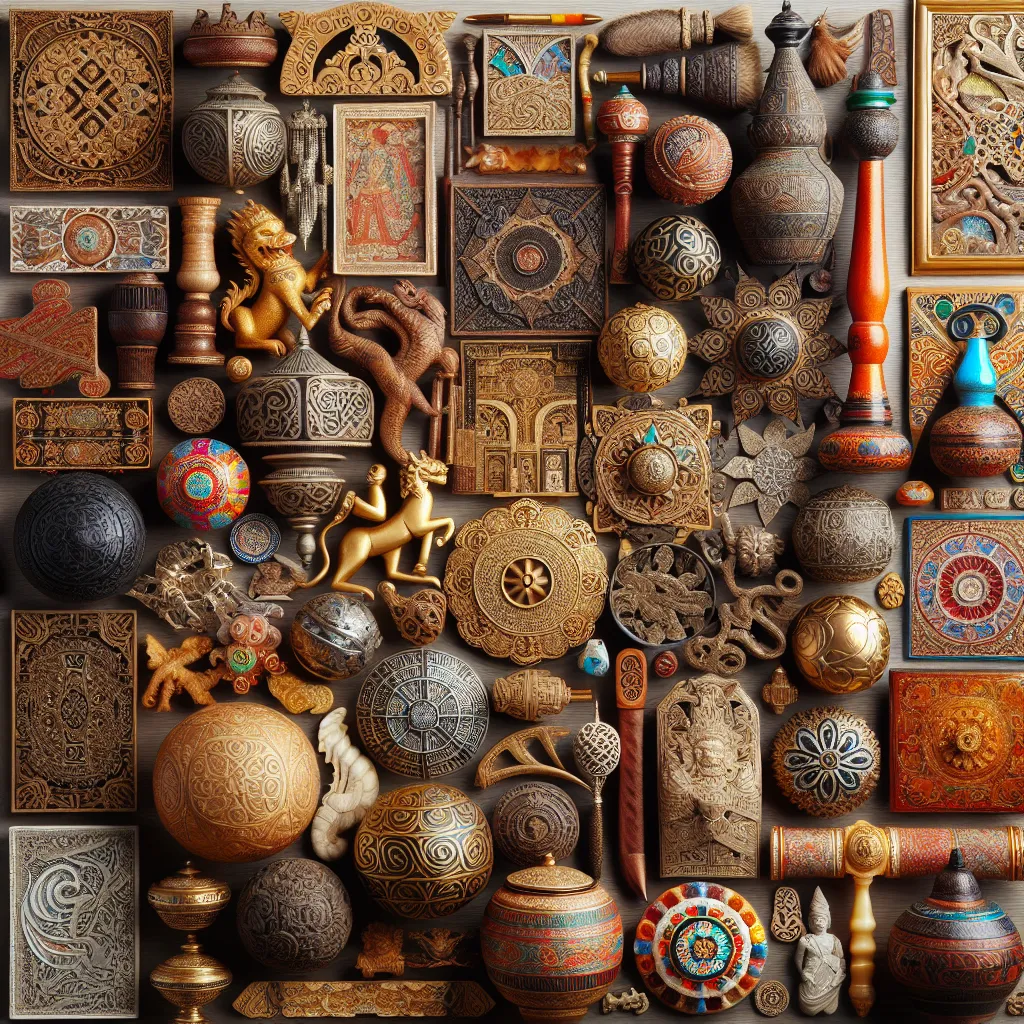– The Importance of Ornaments in Cultural Traditions
Ornaments have always played a crucial role in cultural traditions around the world, serving as powerful symbols that communicate a wide range of meanings and values. From jewelry and body adornments to decorative objects used in ceremonies and everyday life, ornaments hold significant importance in different cultures.
In many societies, ornaments are closely linked to social status, spirituality, and rites of passage. For example, in some African cultures, intricate beadwork and brass jewelry are worn to signify a person’s tribal affiliation, marital status, or social standing within the community. Similarly, in South Asian cultures, ornate henna designs and elaborate jewelry are integral parts of wedding rituals, symbolizing beauty, prosperity, and the sacred bond of marriage.
Furthermore, ornaments often carry deep spiritual and symbolic meanings. In Native American cultures, feathers, shells, and turquoise are used in jewelry and ceremonial objects to convey spiritual connections to nature, ancestors, and the divine. These ornaments are not merely seen as decorative items, but as embodiments of sacred stories, traditions, and the interconnectedness of all living beings.
The significance of ornaments in cultural traditions goes beyond aesthetics; they serve as a means of expressing identity, preserving heritage, and honoring ancestral wisdom. Through intricate patterns, materials, and designs, ornaments encapsulate the diverse narratives and beliefs of different societies, reflecting the rich tapestry of human experience and creativity across the globe.
– Symbolic Meanings of Ornaments Around the World
The Symbolism of Ornaments in Different Cultures
Ornaments have played a significant role in various cultures around the world, with each ornament carrying its own symbolic meaning. In many cultures, ornaments are not merely decorative objects but are laden with deep symbolic significance. These symbols often represent beliefs, traditions, and cultural values. Understanding the symbolic meanings of ornaments in different cultures provides insight into the rich tapestry of human civilization.
In ancient Egyptian culture, the ankh symbol, resembling a cross with a loop at the top, was a powerful ornament representing life and immortality. It was commonly depicted in hieroglyphs and often held by gods and pharaohs. The ankh served as a powerful symbol of eternal life and regeneration.
In East Asian cultures, the dragon motif is a prevalent ornament symbolizing power, strength, and good luck. Dragons are revered beings in Chinese, Japanese, and Korean folklore, and their imagery adorns various ornaments, from jewelry to architecture. The dragon symbolizes potent and benevolent forces in nature.
Furthermore, in Native American cultures, dreamcatchers are traditional ornaments that hold deep symbolic meanings. These beautiful ornaments, consisting of a woven web around a hoop adorned with sacred items such as feathers and beads, are believed to protect the sleeping individual from negative dreams and energies. They are seen as powerful talismans for spiritual protection and guidance.
Additionally, in Celtic culture, the triskele, a motif consisting of three swirling arms, symbolizes a variety of concepts, including progress, cycles of life, and spiritual growth. This ornament is richly embedded in Celtic mythology and is often associated with dynamic forces of nature and the interconnectedness of all things.
These examples illustrate the profound symbolic meanings that ornaments hold in various cultures worldwide. From symbols of protection and spirituality to representations of power and eternity, ornaments play a crucial role in expressing the deep-rooted values and beliefs of diverse societies.
– Exploring Ornamental Symbolism in Diverse Cultures
Ornaments hold a significant place in different cultures around the world, serving as symbols of tradition, spirituality, and social status. Exploring the ornamental symbolism in diverse cultures reveals the rich tapestry of meanings and representations attached to these decorative elements.
In many Eastern cultures, ornaments such as intricate henna designs carry deep symbolic meanings. In Indian culture, the “bindi” worn on the forehead symbolizes the mystical “third eye” and spiritual awakening. Similarly, in Chinese culture, the ornate designs of the traditional cheongsam dress convey auspicious symbols such as happiness, wealth, and longevity.
Meanwhile, in African cultures, beadwork holds profound significance, with different colors and patterns conveying specific messages about tribal affiliation, marital status, and even spiritual beliefs. The careful craftsmanship and vibrant colors of these ornaments carry the cultural narratives of generations.
In Western cultures, ornamental symbolism is often seen in traditional jewelry such as Celtic knots, which represent eternity and the interconnectedness of life, or the use of specific gemstones like the sapphire to symbolize wisdom and royalty.
Overall, exploring ornamental symbolism in diverse cultures unveils the universal human inclination to imbue objects with profound meaning, reflecting the values, beliefs, and aspirations of societies throughout history.
– Cultural Significance of Ornaments: A Comparative Analysis
Ornaments have always held a deep cultural significance in various societies across the globe, serving as symbolic representations of heritage, beliefs, and social status. A comparative analysis of the symbolism of ornaments in different cultures reveals the diverse meanings attached to these decorative objects. In many cultures, ornaments are not merely accessories but bearers of profound cultural and spiritual significance.
In some cultures, such as the Indian tradition, ornaments are intricately linked to spirituality and are often considered auspicious. For example, the Mangalsutra, a sacred necklace worn by married women, symbolizes marital union and is believed to protect the husband’s well-being. Similarly, the significance of ornaments in Chinese culture is deeply rooted in symbolism, with items like jade bangles representing purity, longevity, and prosperity.
On the other hand, ornaments in African cultures often serve as markers of social status and tribal affiliations. Elaborate beadwork and jewelry are not only symbols of beauty but also convey belonging to a specific community or group. Similarly, in Native American cultures, traditional ornaments such as headdresses and jewelry reflect tribal identity and are imbued with spiritual meanings connecting the wearer to their heritage and the natural world.
Further, the significance of ornaments in European cultures has evolved over centuries, with each region and historical period contributing to a rich tapestry of symbolism. For instance, the Celtic tradition attributes powerful meanings to intricate metalwork and symbols such as the triskele, representing unity of the three realms: land, sea, and sky.
Understanding the cultural significance of ornaments in diverse societies provides valuable insights into the historical, social, and spiritual aspects of different cultures. The symbolic meanings attached to ornaments not only reflect the values and beliefs of a society but also highlight the universal human tendency to adorn oneself with objects that carry deep cultural significance.
In conclusion, the comparative analysis of the symbolism of ornaments across various cultures underscores the profound cultural and spiritual significance of these decorative objects. Whether as markers of social status, expressions of spirituality, or symbols of tribal identity, ornaments continue to play a pivotal role in preserving and transmitting cultural heritage across generations.

